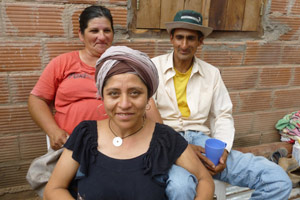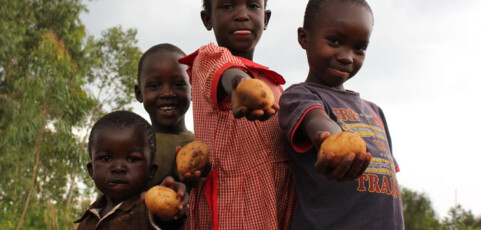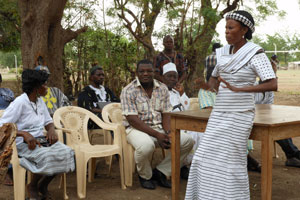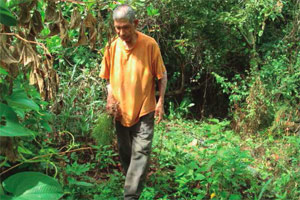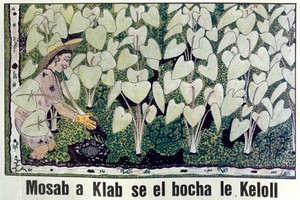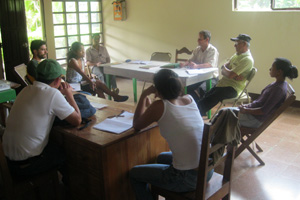En los últimos años los servicios intangibles que brindan los pastizales de Sudamérica tomaron importancia, principalmente los rioplatenses de la Argentina, Uruguay, Paraguay y sur de Brasil. Los pastizales rioplatenses de la Argentina pertenecen en parte a la subregión conocida como Pampa Deprimida. Una porción importante de este paisaje ha sido fuertemente afectada por el proceso de agriculturización. Paradójicamente, en la región argentina existen áreas ubicadas en los alrededores de los grandes cascos urbanos que aún conservan superficies importantes de tierras cubiertas por pastizales naturales manejados por pequeños productores familiares.
From farmer-pastoralist conflicts to profitable alliances
The area around Wum in the Northwest Province of Cameroon is notorious as a conflict hotspot. As pressure increases on available land, conflicts occur more frequently between sedentary family farmers and pastoral communities. Farmer-pastoralist alliances are helping to resolve the conflicts by transforming the relationships between these families.
“We are a political and economic force”
About 23 years ago, in Santiago del Estero, a province in the north of Argentina, the Peasant Movement of Santiago del Estero Via Campesina (MOCASE -VC) was established. One of its leaders is Deo Sumaj, an impressive peasant woman of the Vilela indigenous people. “Peasant family farming could provide many answers to the crises that humanity faces.”
Farming for nutrition: – back to the future
Nutrition has become one of the buzz words of the year, like resilience, and landscapes. What they have in common is that they refer to complex situations with political forces competing over the backs of rural and urban communities. The nutrition challenge is clear – with a billion hungry people on this planet and another two billion overweight – it is time to act. Persistent hunger and undernutrition are inexcusable in a world of plenty. But the crucial question is: who should act and how?
Food fairs revive local food and nutrition
Food fairs are an important tool and space to promote food sovereignty as they take place in local public spaces and within people’s own socio-cultural settings. One excellent example was a food fair in Ghana, organised by the Centre for Indigenous Knowledge and Organisational Development (CIKOD). Women farmers exhibited traditional crops and foods, emphasising their importance for local and national food and nutrition security. The fair reminded community and political leaders of the value of neglected traditional foods. Some years later, it can be seen how this and subsequent food fairs helped to ensure the improved integration of traditional foods and agroecological farming into national food security plans.
Una iniciativa institucional para preservar la biodiversidad
El Centro de Resguardo es un espacio donde se establecen y reproducen plantas medicinales y aromáticas, asociándose especies silvestres y cultivadas, y donde además se registran los conocimientos populares sobre sus usos.
The Mother of Our Breath
Women have been the nurturers of the family and providers of food on land, while men have been providers from the sea. Children are expected to help their parents and other elders in their different tasks. This is the story of the Paulauan traditional family farming system in the western most regions of the Caroline Islands in the Republic of Palau.
Guinea pigs – small livestock with big potential
The right to food sovereignty is a part of the Plurinational State of Bolivia’s constitution, but what does this actually mean for family farmers? The truth is that many people in rural areas are far from having access to adequate food and nutrition, with 37% of children under five reported to be suffering from stunting caused by malnutrition. Amongst the institutions and initiatives that aim to improve food security and sovereignty, the cuy (or guinea pig) project stands out for the inroads it has made towards improving food and nutrition at the family level.
Youth and agriculture: German youth struggle for land
‘Land grabbing’ has grabbed people’s attention in recent years, but this phenomenon is not restricted to developing countries. In the heart of Europe, young German farmers like Paula Giola are also struggling to retain and regain access to farmland.
Peasant to peasant: The social movement form of agroecology
After the electoral defeat of the Sandinistas in 1990, former land owners returned to Nicaragua from the USA. They began to take back their former estates through legal and less than legal manoeuvering, driving many rural people off the land they had been cultivating. This ‘agrarian counter-reform’ as it became known, left many hundreds of people landless in its wake during the 1990s and early 2000s. Now a national union has adopted agroecology and is leading the way for peasant farmers to collectively work their way out of poverty and towards a more resilient model of agriculture.



